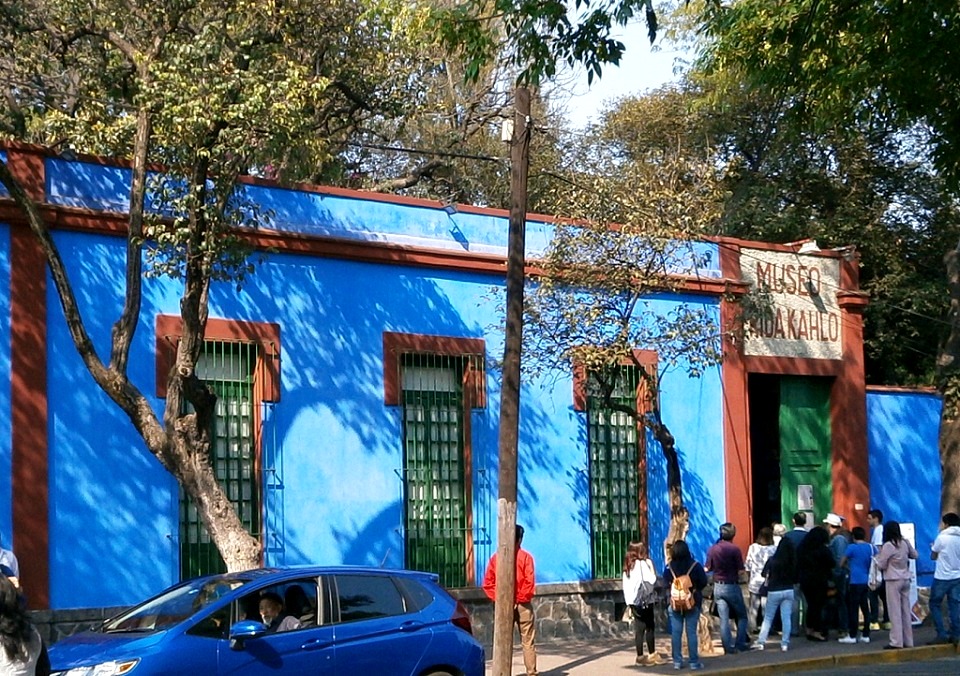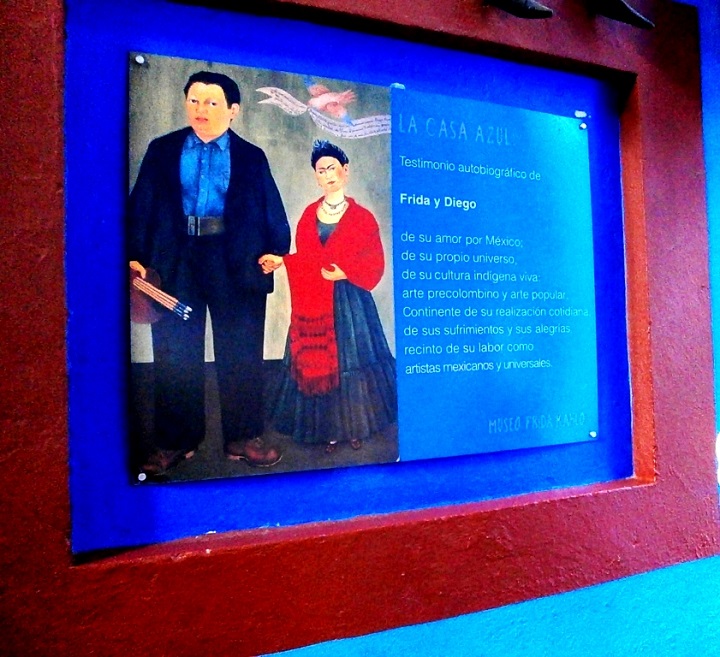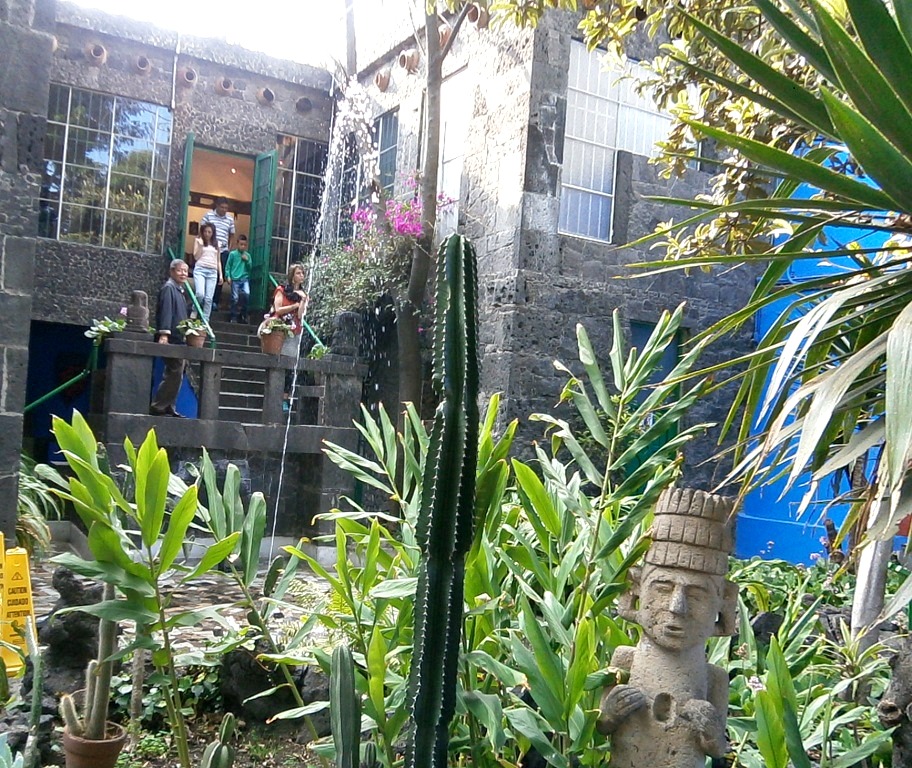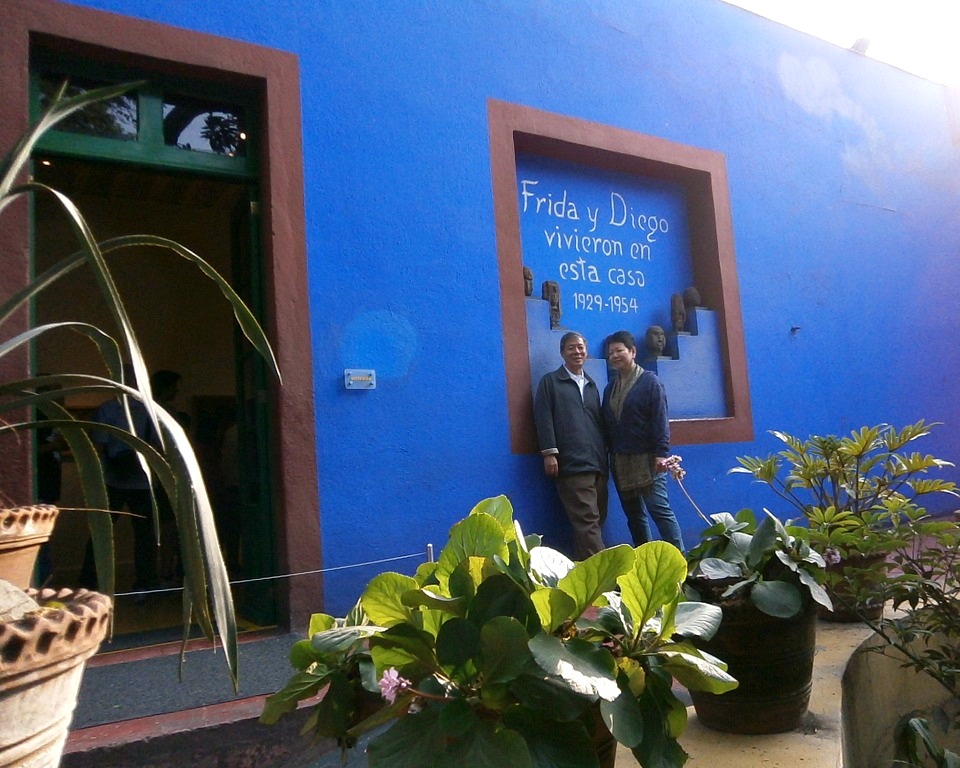Filtered By: Lifestyle
Lifestyle
Coayacán, Mexico City: In the Blue House of Frida Kahlo
Text and photos by ALICE SUN-CUA
La Casa Azul, now Museo Frida Kahlo, was indeed blue. The smooth, three-storey-high walls facing the streets were painted an unending cobalt. The edifice was a typical neo-colonial house built within a large, 800-square meter lot; many changes and improvements were added later. It stood on the corner of London and Allende Streets in the quietly affluent neighborhood of Coayacán, easily accessible through the city’s Metro line.
We were staying right in the area, in a beautiful hotel called Maria del Alma, and the Blue House was just a ten-minute walk away.

Magdalena del Carmen Frida Kahlo Calderón, or, Frida Kahlo, Mexico’s foremost painter and poet, was born in this house in 1907. Her father was German, her mother Mexican. She contracted polio at a very young age, causing her right leg to wither; she walked with a visible limp throughout her life.
At 22 years old, Frida met a vehicular accident which crushed her spine and injured her pelvic organs. Her uterus was pierced by a steel rod, it was said, and she could never have children. She underwent almost 40 surgeries for her injuries, and she stayed in bed for many months and endured endless pain.
She had to lie immobile on her back most of the time, and she started to paint to console herself. It was at this time when her talent began to flourish. Because of her childhood illness and her accident she became very introspective and her portraits and poetry showed a tortured soul.
One day, the already-popular muralist and painter Diego Rivera visited their house and she showed him some of her paintings. Their romance began, and they eventually got married. It was the start of a fiery and tempestuous relationship, as Diego was often unfaithful. Frida too, had her share of lovers, both male and female, including the Russian revolutionary Leon Trotsky.
Socialists to the core, Frida and Diego joined leftist groups, and even sheltered Trotsky in the Blue House after his rupture with Stalin. Through the years Frida was able to have exhibits abroad, which were all enthusiastically received. Some critics even regarded her as a better painter than her husband, Diego, whom she divorced, but later remarried.

Going up another level we were led to Frida’s atelier, a sunny room with large windows, giving the room a profusion of natural light. Here some of her sketches were shown, including her paint brushes, the tubes of oil paint she used, some still open, and even the mirror she used to look at herself as she painted the self-portraits. It was said that she also taught painting in this studio, and some of her students later became famous painters in their own right. The room was left as it was when she died at age 47, of pneumonia.
Further on were two bedrooms. The first one had a bed with a strange contraption above it, including a mirror. This was the bed that she repaired to after the accident that left her with injuries to the spine so severe she could not get up for eight months. Her mother, to comfort Frida, built a wooden frame above her bed that could hold a canvas. Beside it was a mirror. Frida was thus able to paint in this manner, even as she was forced to lie on her back so that her spinal bones could heal. Everyone was visibly touched by her indomitable, artistic spirit.
Another bedroom near the first one was the bed where she breathed her last. On the vanity dresser was a colorful ceramic urn, said to contain part of her ashes. In this room too, were hundreds of her collections from her travels abroad, carefully arranged in wooden and crystal display cases.

A large TV screen in one of the raised areas near the garden played a loop of Frida’s life and art. On one far end of the wall, also painted the same blue, was the framed message, “Diego y Frida vivieron en está casa [Diego and Frida lived in this house] 1929–1954.”
Still further was a special exhibit of Frida Kahlo’s dress style. Because of her deformed leg Frida chose to wear long skirts; her blouses showed the artistry of native Tehuacan embroidery and style. In this exhibit we were shown how, through the years, she traveled around the world garbed in her stylized native Mexican dresses. There were originals (or replicas of them) in lace and organza, formal dresses she wore on special occasions.
There were photographs of her family, too, when she was still a child; later she was shown with Diego, and we could not help but notice how diminutive she looked, how child-like even, as she stood beside his tall and massive frame.

More Videos
Most Popular



